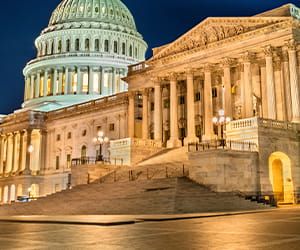U.S. Treasury Issues Proposed Regulations For 100 Percent Bonus Depreciation
On December 22, 2017, the Tax Cuts and Jobs Act, (TCJA) amended the federal income tax code and created what was then called “100% expensing.” However, it is 100% bonus depreciation and allows businesses to depreciate 100% of the cost of certain eligible property in the first year of use.
On August 3, 2018, the Treasury Department issued proposed regulations both clarifying and amplifying the 100% bonus depreciation rule. While taxpayers are not ordinarily permitted to rely on proposed regulations and must wait until such rules are officially finalized, the Treasury has indicated that taxpayers may apply the rules in the proposed regulations to property acquired and placed in service after September 27, 2017. The discussion below is a mere summary of top-level issues highlighted in the newly proposed regulations.
Background
Among the many changes made by the TCJA, Congress increased the prior 50% bonus depreciation rate to a full 100%, which means that for federal income tax purposes the depreciable cost of eligible business assets will be fully deductible when the assets are placed into service. These deductions however, take the form of depreciation, rather than mere expense deductions, thus depreciation accounting rules shall apply. Also, keep in mind that state income tax depreciation rules may not follow these new federal rules and many states are expected to decouple from the federal rules as some already have.
To be eligible for 100% bonus depreciation, the taxpayer must both acquire and place the qualified asset in service after September 27, 2017. Later, beginning in the year 2023, the applicable bonus depreciation percentage decreases to 80% (in 2023); 60% (in 2024); 40% (in 2025); and 20% (in 2026). Also, special rules apply to aircraft and other assets with “long production periods.”
Assets eligible for 100% bonus depreciation include:
- Tangible property with a MACRS recovery period of 20 years or less
- Computer software
- Water utility property
- Qualified film or television productions
- Live theatrical productions
However, the list of qualified property is slightly different for assets acquired and placed in service after September 27, 2017, but before January 1, 2018. See the discussion below for the special rules related to assets that fall within that window.
Summary of the proposed regulations:
Placed in Service rules: The proposed regulations generally retain the placed-in-service rules under pre-Act section 168(k). To be eligible for 100% bonus under the TCJA, assets must be placed in service between September 27, 2017 and January 1, 2027 (and January 1, 2028 for long lived property and aircraft). The proposed regulations also contain special rules to determine the placed in service date when the taxpayer engages in a “step in the shoes” transaction under section 168(i)(7) or a technical termination (prior to 2018).
“Original use” vs. “used” property: As with the pre-Act rules, to be eligible for the new 100% bonus depreciation, so-called “original use” of the asset must begin in the hands of the taxpayer claiming the bonus depreciation. However, and in addition, the new Act for the first time allows bonus depreciation in the case of used property. However, for used property to be eligible, the acquisition must meet special purchase requirements now found in IRC section 168(k)(2)(E)(ii).
The Proposed Regulations now clarify that to meet the special purchase requirements for used property, the taxpayer must not have “used” the property previously and the purchase must meet the requirements contained in section 179(d)(2)(A), (B), (C), and 179(d)(3), (which generally disqualify purchases from certain related parties and transactions where basis is determined by reference to the transferor’s basis, carry-over basis and transfer basis situations).
In addition, the proposed regulations have now clarified several other important issues, including, but not limited to, the following:
- That a taxpayer generally only “uses” basis in which it had a depreciable interest. For example, a lessee only “uses” the tenant improvements in which it has basis. This means that a tenant may purchase a building from an unrelated third party and take bonus depreciation on qualified assets (other than the assets in which it had basis);
- Bonus depreciation can be taken on certain partnership step-up amounts (though most partnership adjustments are NOT eligible for bonus depreciation). Specifically, the regulations state that a taxpayer may take bonus depreciation on a section 743(b) step-up (except when due to the death of a partner) that otherwise meets the bonus depreciation requirements, but may not take bonus on a section 734 step up or the numerous other possible partnership basis adjustments and partnership asset transfers.
- A taxpayer may generally take bonus depreciation on the qualified portion of any excess basis in a section 1031 transaction.
- Special consolidated group rules also help identify related party purchases to determine which used property purchases qualify for bonus depreciation.
Acquisition date rules: To claim 100% bonus taxpayers must acquire assets after September 27, 2017 or acquire those assets pursuant to a written binding contract dated after September 27, 2017. The proposed regulations therefore contain rules for determining when a contract is “binding.” The proposed regulations on the subject are like the rules contained in Treas. Reg. 1.168(k)-1, which applied to prior versions of bonus depreciation. As before, generally, limitations on the amount of damages (below 5% of the contract price) and conditions that are within the control of either party will prevent a contract from being a binding contract.
But there are some critical new special acquisition rules for “self-constructed” property. Under the pre-Act regulations, there were two types of “self-constructed” property: (1) property that is actually produced (constructed or manufactured) by the taxpayer (“actual self-constructed property”); or (2) property produced (constructed or manufactured) for the taxpayer under a contract with a third party (“third-party self-constructed property”). Under the pre-Act regulations the “acquisition” date for self-constructed property was the date on which construction (work of a significant physical nature) began. Also, under the prior regulations, the same construction date rule applied to both types of self-constructed property. However, under the new proposed regulations there is now a significant change to the self-constructed asset rules that will now force taxpayers with “third-party” self-constructed contracts to determine the acquisition date by reference to the date of the written binding contract instead of the date on which construction began. This generally will result in an earlier acquisition date – pushing taxpayers out of the 100% bonus depreciation rules and into a lower bonus depreciation percentage. Also, a safe-harbor in the proposed regulations allows taxpayers to “delay” the acquisition date to the date on which the taxpayer has incurred 10% of the construction costs.
2017 Qualified Assets: Congress made the 100% bonus depreciation changes effective for assets acquired and placed in service after September 27, 2017 and made other depreciation related changes effective for years beginning on or after January 1, 2018. Based on these different effective dates, there was initial uncertainty around whether qualified improvement property would be bonus-eligible between September 28, 2017 and December 31, 2017. The proposed regulations clarify that qualified improvement property, qualified leasehold improvement property, qualified restaurant property (that is also qualified improvement property), and qualified retail improvement property are all eligible for bonus depreciation under the Act if acquired and placed in service after September 27, 2017, but before January 1, 2018.
NOTE: On and after January 1, 2018, Congress eliminated qualified leasehold improvement property, qualified restaurant property, and qualified retail improvement property. However, qualified improvement property remains. While Congress intended that qualified improvement property be eligible for 100% bonus depreciation, due to a technical drafting error in the TCJA, such qualified improvement property contracted for after September 27, 2017 and placed into service between January 1, 2018 and January 1, 2023 will not be bonus-eligible. We believe that Congress will ultimately draft a technical correction to correct the treatment of qualified improvement property so that it is eligible for bonus depreciation. But until that time, the letter of the law applies and such property is ineligible for bonus depreciation.
What does CohnReznick think?
The new bonus depreciation rules create many new opportunities to accelerate significant depreciation deductions. Both the change in the bonus rate to 100% and the ability to take bonus depreciation on used property will benefit many taxpayers across most industries.
While these new regulations help answer many questions, we still expect that there will be issues that will need to be additionally clarified before they are finalized. Taxpayers applying the written binding contract rules may find it difficult to determine whether a contract is “binding”. Similarly, taxpayers that self-construct property might find it difficult to apply the 10% safe harbor or to determine when construction began.
The fact that the proposed regulations were published in August may also cause issues for taxpayers that already filed 2017 tax returns; or that will file 2017 returns soon; or who paid estimates for 2018. Those taxpayers might have innocently taken positions inconsistent with the new regulations. However, because the regulations are merely proposed, taxpayers can decide to not follow the proposed regulations and wait for publication of final regulations. In that case, the taxpayer would not change its 2017 tax return and instead would changes future filed returns as required by the final regulations. In the alternative, a taxpayer that already filed a 2017 tax return taking positions inconsistent with the new proposed regulations might choose to file a Form 3115 (application to change accounting methods) in 2018 to change its method of accounting or amend its 2017 tax return.
We know that there will be many questions around the application of the new rules. CohnReznick is committed to providing the technical expertise and practical insights necessary to apply the new rules. If you have any questions about the new bonus depreciation rules feel free to contact Richard Shevak, Principal, National Tax, at 862-245-5029.
Contact
Let’s start a conversation about your company’s strategic goals and vision for the future.
Please fill all required fields*
Please verify your information and check to see if all require fields have been filled in.

Tax Reform: The Tax Cuts and Jobs Act – What you need to know, now
Any advice contained in this communication, including attachments and enclosures, is not intended as a thorough, in-depth analysis of specific issues. Nor is it sufficient to avoid tax-related penalties. This has been prepared for information purposes and general guidance only and does not constitute legal or professional advice. You should not act upon the information contained in this publication without obtaining specific professional advice specific to, among other things, your individual facts, circumstances and jurisdiction. No representation or warranty (express or implied) is made as to the accuracy or completeness of the information contained in this publication, and CohnReznick, its partners, employees and agents accept no liability, and disclaim all responsibility, for the consequences of you or anyone else acting, or refraining to act, in reliance on the information contained in this publication or for any decision based on it.











